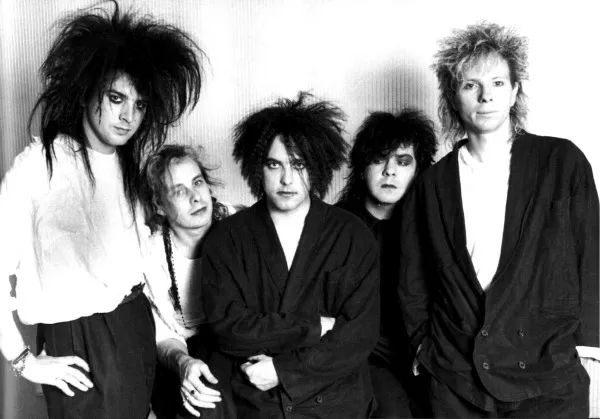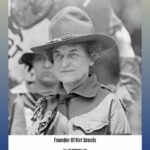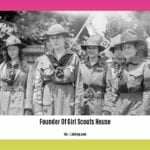Paula Abdul’s Chart Domination: A Debut Album for the Ages
In 1988, Paula Abdul unleashed a pop culture phenomenon with her debut album, “Forever Your Girl.” The album wasn’t just a hit—it was a record-shattering sensation, launching an unprecedented four singles to the top of the Billboard Hot 100 chart. This achievement solidified Abdul’s transition from a renowned choreographer to a bona fide pop icon, leaving an enduring legacy on the music world.
“Straight Up”: An Anthem of Confidence
“Straight Up” wasn’t merely Paula’s debut single; it was her rocket to superstardom. The song dominated the airwaves, claiming the Billboard Hot 100’s top spot for three consecutive weeks. Its infectious melody and empowering lyrics resonated deeply with listeners, quickly becoming an anthem of strength and confidence. “Straight Up” solidified Abdul’s presence in the music scene and established her as an artist to watch.
“Forever Your Girl”: A Heartfelt Ballad
Following the energetic success of “Straight Up,” “Forever Your Girl” showcased Paula’s softer side. The title track, a heartfelt ballad, proved her versatility as an artist capable of delivering both high-energy dance tracks and emotionally resonant ballads. The song’s romantic lyrics and soulful vocals resonated with audiences, propelling it to the top of the charts and further solidifying her status as a rising star.
“Cold Hearted”: Dance Floor Domination
“Cold Hearted” proved that Paula could seamlessly blend catchy pop melodies with infectious dance beats. The song quickly became a club favorite, its playful lyrics and irresistible rhythm making it a staple on dance floors worldwide. Reaching #1 in October of ’88, “Cold Hearted” demonstrated Paula’s ability to dominate multiple pop music subgenres.
“Opposites Attract”: Breaking Genre Barriers
“Opposites Attract” marked a bold step for Paula, as she blended pop sensibilities with a hip-hop element. Featuring a rap verse from the animated MC Skat Kat, the song defied genre expectations and became a crossover smash hit. The song’s playful premise and innovative approach resonated with audiences, making it Paula’s fourth consecutive #1 hit from “Forever Your Girl.”
A Legacy Etched in Chart Gold
“Forever Your Girl” wasn’t simply a collection of hit songs; it was a cultural phenomenon. The album has sold over 7 million copies worldwide, cementing Paula Abdul’s place as a pop icon. Its enduring popularity speaks volumes about her undeniable talent and the timeless appeal of her music.
Uncovering the 1988 Debut Album with 4 Number One Hits
While Paula Abdul’s “Forever Your Girl” made a splash in 1988, it was Tracy Chapman who achieved the groundbreaking feat of securing four number-one singles from a debut album that year. Her self-titled album, a compelling blend of folk, blues, and protest songs, captivated audiences and left an enduring mark on music history.
Tracy Chapman: A Voice for the Marginalized
Born in 1964, Tracy Chapman’s upbringing in Cleveland exposed her to social and economic disparities that later permeated her music. Her unique blend of folk, blues, and protest songs resonated with audiences seeking authenticity and social commentary. Emerging during a time of social and political upheaval in the late 1980s, Chapman’s music provided a voice for the marginalized and resonated with those seeking change.
The Groundbreaking Debut Album
Released on April 5, 1988, by Elektra Records, Tracy Chapman’s self-titled debut album was produced by David Kershenbaum and Tracy Chapman herself. The album was widely praised for its honest lyrics, soulful vocals, and sparse yet effective production. It garnered critical acclaim, earning three Grammy Awards in 1989, including Best New Artist, Best Contemporary Folk Album, and Best Female Pop Vocal Performance for “Fast Car.” Chapman’s debut album shattered sales records, achieving multi-platinum status, and became a cultural touchstone for its honest portrayal of social issues.
Four Singles, Four Number One Hits, One Historic Feat
“Fast Car,” “Talkin’ ’bout a Revolution,” “Baby Can I Hold You,” and “Across the Lines” propelled Chapman to stardom, making her the only artist to achieve four number-one hits from a debut album in 1988. This achievement remains unmatched, highlighting the unique appeal and impact of Chapman’s debut. No other artist in 1988, even established acts, achieved this with a debut album, underscoring its significance.
1988 Music Scene: A Year of Diversity and Breakthroughs
The year 1988 saw a diverse musical landscape. While pop, rock, and hair metal dominated the charts, with prominent artists like George Michael, Guns N’ Roses, and Def Leppard reigning supreme, Chapman’s folk sound cut through the noise. It captured the attention of audiences hungry for authenticity and substance, proving that music with a message could achieve both critical acclaim and commercial success.
Billboard Chart Success: A Testament to Chapman’s Impact
Chapman’s debut album reached number one on the Billboard 200 chart and remained there for over a year, indicating its enduring popularity. All four singles topped the Billboard Hot 100 chart, a testament to their individual appeal and Chapman’s broad appeal. This remarkable achievement cemented her status as a significant force in the music industry.
Eazy-E’s Best-Selling 1988 Debut Album: Decoding the Success of “Eazy-Duz-It”
1988 marked a year of groundbreaking debuts, and Eazy-E’s solo career ignited with the release of his album, “Eazy-Duz-It.” This album wasn’t just music; it was a cultural phenomenon that put gangsta rap on the map. Produced by Dr. Dre and DJ Yella, “Eazy-Duz-It” delivered a raw and infectious sound that blended funk and electro with hard-hitting beats, creating a sonic revolution that changed the sound of hip-hop forever.
Eazy-E: A Pioneer of Gangsta Rap
Eric Lynn Wright, better known as Eazy-E (September 7, 1964 – March 26, 1995), was a rapper, songwriter, record producer, and entrepreneur. A key figure in the emergence of West Coast hip-hop and gangsta rap, Eazy-E was a founding member of N.W.A., a pioneering gangsta rap group formed in Compton, California, in 1986. He co-founded Ruthless Records with Jerry Heller, a record label that played a crucial role in promoting and distributing early West Coast rap music.
From the Streets to the Charts
Released on November 22, 1988, on Ruthless Records and Priority Records, “Eazy-Duz-It” peaked at number 41 on the Billboard 200. The album’s success defied minimal airplay, selling 2.5 million copies in the US by 1994 and achieving double-platinum status, solidifying Eazy-E’s place as a gangsta rap pioneer. The album featured hit singles like “Eazy-Duz-It,” “We Want Eazy,” and “Eazy-er Said Than Dunn.” But what catapulted “Eazy-Duz-It” to such success?
The Making of a Cultural Phenomenon
- Pre-N.W.A. Success: “Eazy-Duz-It” established Eazy-E as a solo force before N.W.A. achieved mainstream recognition. This early success laid the groundwork for the group’s later achievements, proving that audiences were hungry for Eazy-E’s unique brand of gangsta rap.
- Gangsta Rap Blueprint: The album’s raw lyrics, gritty street narratives, and uncompromising style became a blueprint for the emerging genre of gangsta rap. Eazy-E’s influence can be heard in the music of countless rappers who followed in his footsteps.
- Production Innovation: The distinctive sound of “Eazy-Duz-It,” crafted by Dr. Dre and DJ Yella, blended funk samples, heavy basslines, and P-Funk influences, shaping the sonic landscape of West Coast hip-hop. This sound became synonymous with the genre.
- Lyrical Themes: Eazy-E’s rhymes on the album tackled themes of street life, crime, police brutality, and social commentary, often delivered with a darkly humorous and confrontational tone that resonated with listeners.
A Legacy of Raw Authenticity
While not a major critical success upon release, “Eazy-Duz-It” gained a devoted following in the underground hip-hop scene and has since been recognized as a seminal work in gangsta rap, praised for its rawness, originality, and cultural impact. “Eazy-Duz-It” continues to influence generations of rappers and remains a touchstone for its unfiltered depiction of street life and its role in shaping the sound and attitude of West Coast hip-hop.
Eazy-E’s lyrics from “Eazy-Duz-It” capture the essence of his in-your-face style: “Now that you bought the album, what the fuck are you going to do with it, bitch?”
1988: A Year of Diverse Musical Triumphs
The year 1988 witnessed a dynamic musical landscape, with a diverse range of artists and genres dominating the Billboard charts. From the soulful pop of George Michael to the hair metal anthems of Def Leppard, a vibrant mix of sounds captivated music lovers worldwide. But at the pinnacle of this musical landscape stood George Michael’s Faith.
George Michael’s Reigning Faith
Released in late 1987, Faith‘s popularity surged into 1988, securing a remarkable 12 non-consecutive weeks at the top of the Billboard 200. The album’s success was driven by its blend of pop, R&B, funk, and rock, appealing to a broad audience. Faith became the best-selling album of 1988 in the US and achieved Diamond certification by the RIAA. Notably, Faith also topped the Top R&B/Hip-Hop Albums chart, a historic achievement as the first album by a Caucasian artist to accomplish this feat.
The Unstoppable Dirty Dancing Phenomenon
Riding high on the success of the hit film, the Dirty Dancing soundtrack became a cultural force. Debuting in August 1987, the soundtrack’s popularity extended into 1988, spending a staggering 18 weeks at #1 on the Billboard 200, including 11 non-consecutive weeks in 1988 alone. Its mix of romantic ballads, energetic dance tracks, and nostalgic classics resonated with a multi-generational audience, leading to an unprecedented 11x Platinum certification by the RIAA.
Guns N’ Roses’ Explosive Debut
While established stars like George Michael and soundtracks dominated the charts, 1988 also witnessed the emergence of a new force in rock music: Guns N’ Roses. Their debut album, Appetite for Destruction, exploded onto the scene, reaching #1 on the Billboard 200 and achieving monumental success with Diamond certification (plus 18x Platinum) by the RIAA. The album’s raw energy, rebellious spirit, and gritty sound resonated with a generation hungry for authentic hard rock, establishing Guns N’ Roses as one of the defining bands of the late 1980s and early 1990s.
A Tapestry of Chart-Topping Sounds
Beyond these standout successes, 1988 saw other artists claim the coveted #1 spot on the Billboard 200. Teen pop sensation Tiffany took the charts by storm with her self-titled debut album, showcasing the enduring power of bubblegum pop. British rockers Def Leppard achieved their first #1 album with Hysteria, solidifying their status as hard rock icons. Bon Jovi continued their stadium-rock dominance with New Jersey, their second consecutive #1 album. Irish rockers U2 further cemented their global stardom with Rattle and Hum, their second album to reach the top spot.
Billboard 200 Number-One Albums of 1988
| Album Title | Artist | Peak Date | Weeks at #1 |
|---|---|---|---|
| Dirty Dancing (Soundtrack) | Various Artists | August 22, 1987 | 11 (non-consecutive) |
| Faith | George Michael | January 16, 1988 | 12 (non-consecutive) |
| Tiffany | Tiffany | February 27, 1988 | 2 |
| Hysteria | Def Leppard | August 27, 1988 | 6 |
| Appetite for Destruction | Guns N’ Roses | August 6, 1988 | 1 |
| New Jersey | Bon Jovi | October 1, 1988 | 4 |
| RATTLE AND HUM | U2 | November 12, 1988 | 1 |
| Cocktail (Soundtrack) | Various Artists | December 3, 1988 | 1 |
| Look What You Made Me Do | Bobby Brown | December 10, 1988 | 1 |
| Traveling Wilburys Vol. 1 | Traveling Wilburys | December 17, 1988 | 3 |
| Any Love | Luther Vandross | December 31, 1988 | 2 |
Forever on Top: The Debut Album That Made History in 1988
Paula Abdul’s 1988 debut album, “Forever Your Girl,” didn’t just top the charts; it shattered them. Producing an unprecedented four #1 singles on the Billboard Hot 100 chart, the album marked a pivotal moment in pop music history. “Forever Your Girl” wasn’t merely a debut; it was a cultural phenomenon, solidifying Paula Abdul’s transition from choreographer to pop icon.
From Choreographer to Pop Sensation
Before stepping into the spotlight as a solo artist, Paula Abdul was already a renowned choreographer. She had worked with some of the biggest names in the music industry, including Janet Jackson. Her debut album marked a successful transition to a solo music career, showcasing her versatility and undeniable talent.
Defining Dance-Pop
The success of “Forever Your Girl” coincided with—and arguably contributed to—the rise of dance-pop in mainstream music. The album’s infectious energy, blend of catchy melodies and danceable beats, and Abdul’s dynamic stage presence resonated with audiences worldwide, propelling the genre to new heights.
An Enduring Legacy
The impact of “Forever Your Girl” extends far beyond its initial success. The album’s songs remain popular today, frequently featured in movies, TV shows, and covered by contemporary artists, proving the timelessness of Abdul’s music.
- There have been a lot of oil nationalization, one main example of a time is cardenas oil nationalization effects.
- The 1986 Celtics Roster is considered to be one of the greatest teams in NBA history. Find out who played on that amazing team! 1986 Celtics Roster
- The Andersonville Metric is a method of measuring the severity of prisoner-of-war camps. Learn more about this important topic at Andersonville Metric.









